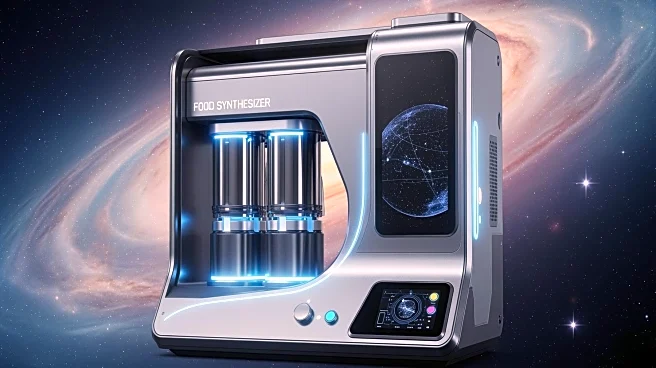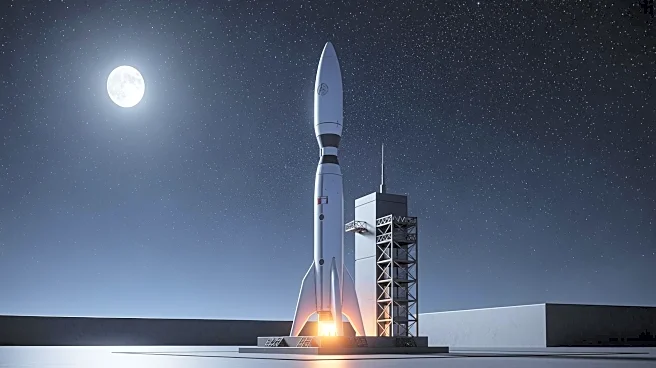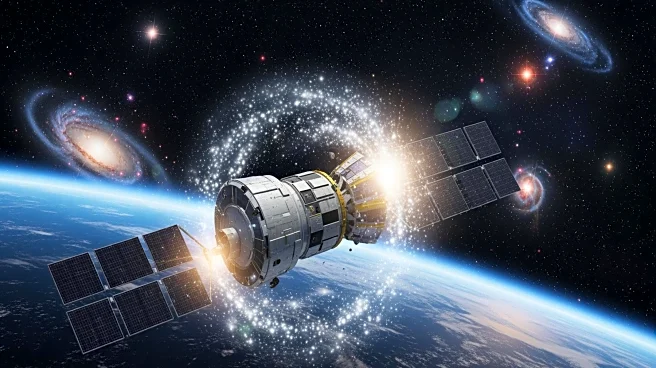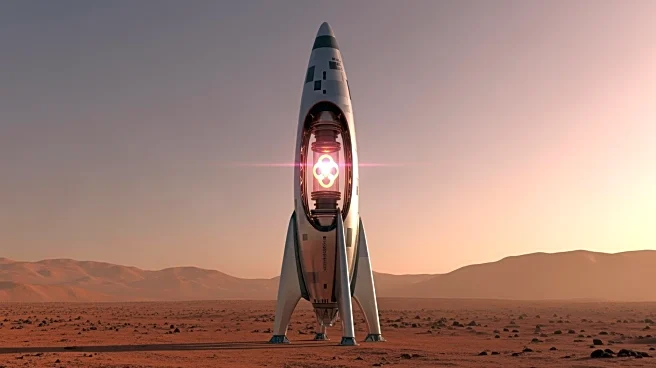What's Happening?
A new 'exosuit' featuring artificial muscles has been tested during a space analog mission in Australia, aiming to improve astronaut mobility on the moon and Mars. Developed by Emanuele Pulvirenti, a research
associate at the University of Bristol, the suit is designed to be worn under traditional spacesuits, reducing resistance and fatigue during extravehicular activities. The testing took place at the CRATER facility in Adelaide, simulating lunar conditions. The suit incorporates nylon and thermoplastic layers for airtightness, with Kevlar used for strength in knee straps and waistbands. This innovation builds on previous exosuit technologies, such as NASA's X1 Robotic Exoskeleton, and aims to enhance astronaut performance.
Why It's Important?
The development of the exosuit represents a significant advancement in space exploration technology, potentially increasing the efficiency and safety of astronauts during missions. By reducing physical strain, astronauts can perform tasks more effectively, which is crucial for long-duration missions on the moon and Mars. This technology could also have applications beyond space exploration, such as aiding individuals with mobility impairments. The successful testing of the exosuit in analog missions suggests its potential for real-world application, possibly even on the International Space Station, enhancing the capabilities of astronauts in various environments.
What's Next?
Further testing and refinement of the exosuit are anticipated, with potential trials on the International Space Station before its expected retirement in 2030. The technology may also be adapted for everyday use, providing mobility assistance for people with disabilities. Continued collaboration between international research teams and space agencies could accelerate the development and deployment of this technology, paving the way for more advanced wearable robotic systems in space exploration.
Beyond the Headlines
The exosuit's development highlights the intersection of space technology and wearable robotics, offering insights into future innovations in both fields. Ethical considerations regarding the accessibility and affordability of such technology for non-space applications may arise, as well as discussions on the long-term impact of enhanced human capabilities in space exploration.











